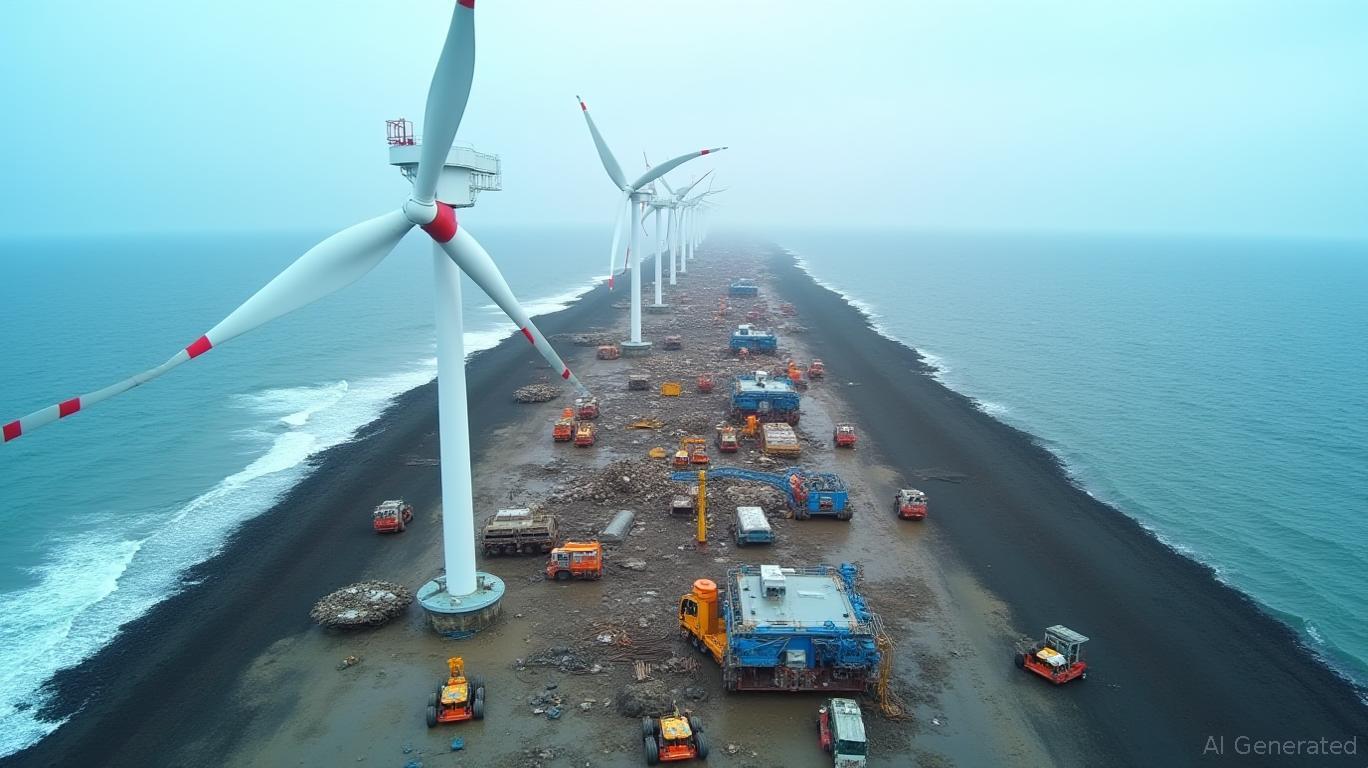Decommissioning the Green Transition: How Aging Renewables Create New Investment Frontiers
The renewable energy
has been a story of rapid growth, with solar and wind capacity surging to meet climate targets. Yet, every boom has its bust—except this time, the “bust” is intentional. As the first generation of wind turbines and solar panels near the end of their 25-30 year lifespans, a quiet but urgent market is emerging: renewable energy infrastructure decommissioning. This sector, driven by regulatory mandates and environmental imperatives, promises to reshape how investors capitalize on the energy transition.
The Regulatory Imperative: From Build to Unbuild
The shift toward renewables has been policy-driven, and so too is the decommissioning imperative. In Europe, the EU's Waste Electrical and Electronic Equipment (WEEE) Directive and the OSPAR Convention mandate that offshore wind installations be fully removed at end-of-life, unless ecological benefits are proven. Meanwhile, China's National Energy Administration is drafting rules requiring solar panel recyclers to register by 2025. These policies are creating a $2.7 billion global decommissioning market by 2030—a figure set to balloon as the first wave of aging assets hits retirement (see Figure 1).
The Aging Infrastructure Tsunami
The scale of decommissioning demand is staggering. By 2030:
- Offshore wind: Only 29 MW of capacity is expected to be retired globally, but this is just the vanguard. By 2040, over 3.5 GW of European offshore wind farms—built in the 2000s—will require dismantling.
- Onshore wind: China alone will retire 1.2 GW of turbines in 2024, with global retirements expected to hit 10 GW annually by the mid-2030s.
- Solar PV: While panels typically last 30 years, the first installations in the 2000s will create a 5 million metric ton annual waste stream by 2050, with 4% of global solar capacity needing recycling by the early 2030s.
This timeline creates a regulatory arbitrage opportunity: firms positioned to handle recycling, logistics, and regulatory compliance can capture value in a fragmented, undercapitalized space.
Technical Challenges = Niche Profits
Decommissioning isn't just about bulldozing old turbines. It requires solving three core problems:
1. Recycling the Unrecyclable
Wind turbine blades, made of fiberglass and balsa wood composites, have traditionally ended up in landfills. Companies like Siemens Gamesa and Ørsted are pioneering solutions:
- Siemens' RecyclableBlade: Uses a resin that dissolves at end-of-life, enabling component separation.
- Plaswire (partnered with Ørsted): Converts blade materials into construction-grade polymers.
- SolarCycle (USA): Achieves 95% recycling of solar panels, extracting high-value silver and polysilicon.
Investment angle: Firms with patented recycling tech (e.g., Veolia's waste-to-resource divisions) or those with strategic government contracts (e.g., China's GCL-Poly Energy for solar recycling) are well-positioned.
2. Logistics in Remote Environments
Offshore wind farms require specialized vessels and underwater robotics to dismantle turbines. Firms like Sweco (Swedish engineering) and Ballast Nedam (Netherlands-based construction) are securing early contracts for European projects. Meanwhile, Aker Offshore Wind is developing AI-driven drones to inspect turbine foundations—a $200 million market by 2030.
3. Regulatory Compliance as a Service
Navigating permits and environmental impact assessments is a bottleneck. Baker McKenzie's renewable law practices and DNV's compliance certification services are already monetizing this demand.
Investment Strategies: Where to Deploy Capital
- Recycling Technology Plays:
- Siemens Gamesa (SGREN.MC): Invests 5% of R&D in recyclable materials.
- SolarCycle (private): Scaling operations in Texas; look for IPO signals.
Veolia (VIE.PA): Expands into specialized e-waste recycling.
Specialized Service Providers:
- Sweco (SWECOB.ST): Wins EU-funded offshore decommissioning contracts.
Ballast Nedam (BALL.AS): Leverages Dutch expertise in North Sea projects.
Regulatory Arbitrage Funds:
- BlackRock's Renewable Infrastructure Fund: Allocates 10% to decommissioning assets.
Green Investment Group (GIG): Focuses on “brownfield” opportunities in Europe.
ETFs with Hidden Exposure:
- iShares Global Clean Energy (ICLN): Includes firms like First Solar (FSLR), which designs recyclable panels.
- VanEck Vectors Solar Energy (KWT): Tracks solar recyclers like SunPower (SPWR).
Risks and Considerations
- Policy Uncertainty: China's recycling rules are still evolving, while the EU's “right to repair” could delay retirements.
- Cost Volatility: Dismantling offshore wind costs $3,000–5,000 per MW, with recycling expenses adding 20–30%.
- Material Supply Chains: Recycling rare earth metals like neodymium (used in turbine magnets) could face bottlenecks.
Conclusion: The Time to Act is Now
The decommissioning sector is the “back end” of the energy transition—unsexy but essential. With $19 billion in global decommissioning costs allocated to renewables by 2030, and regulatory tailwinds pushing compliance, this is a $100 billion opportunity waiting for investors who can stomach early-stage risks.
Focus on firms with patented tech, geographic monopolies, or government-backed mandates. The next Tesla of this space might be a materials recycler in Jiangsu, China—or a drone company in Norway. Either way, the era of unbuilding has begun.

Comments
No comments yet